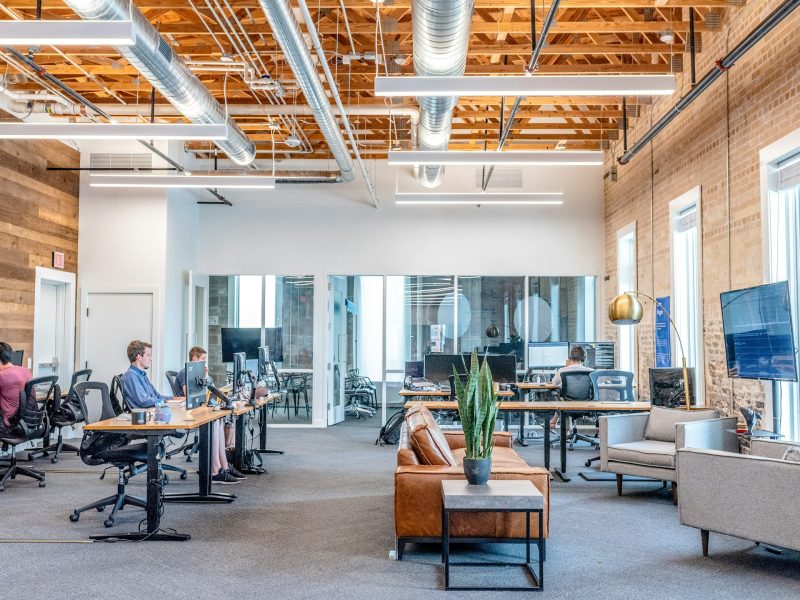Last Updated on: 24th June 2024, 03:42 pm
Efficiency is not just a buzzword in business—it’s a necessity. Companies are always looking out for new ways to better streamline operations and enhance productivity. One area receiving a substantial focus is the workspace, where even minor adjustments can significantly impact the bottom line.
The concept of workspace efficiency has evolved beyond simple space management. Today, it encompasses a holistic approach involving technology integration, process optimization, and employee wellness. Efficient workspace management not only reduces costs but also boosts employee satisfaction and productivity, thereby enhancing overall business performance. Here, we explore six dynamic strategies that modern businesses are implementing to transform their workspaces into engines of efficiency.
Embracing Flexible Work Arrangements
One of the most transformative trends in modern business is the adoption of flexible work arrangements. This strategy includes remote working, flexible hours, and hot-desking, all of which contribute to a more dynamic and adaptable work environment.
By reducing the need for a permanent, personal workspace for each employee, businesses can significantly decrease their real estate footprint, leading to reduced overhead costs. Plus, flexibility in work arrangements is increasingly seen as a critical factor in attracting the best talent and also retaining them, particularly among younger workers who value autonomy and work-life balance.
Efficient Inventory Management
Good inventory management is crucial for businesses looking to enhance workspace efficiency. Optimizing the use of space for inventory can lead to substantial cost savings and improved workflow. An organized inventory system prevents overstocking and understocking, ensuring that resources are available when needed without occupying unnecessary space. Techniques such as just-in-time inventory can be particularly effective, allowing companies to operate on leaner inventory levels while still meeting customer demands.
As businesses grow, the challenge of managing inventory becomes more complex. Utilizing modern inventory management software can help track stock levels in real-time, forecast needs based on historical data, and automate reordering processes. This technology not only optimizes inventory space but also reduces the likelihood of error, making the entire operation more efficient.
Streamlining Space With Smart Technology
Integrating smart technology into the workspace is a game-changer. Tools like IoT sensors and AI-driven analytics can dramatically improve the utilization of office spaces. Sensors can track room occupancy and equipment use, providing data that helps businesses understand usage patterns and adjust accordingly. This technology ensures that workspaces are used efficiently, reducing wasted space and energy.
In addition, software solutions play a pivotal role in optimizing how employees interact with their workspace. Robin Powered, for instance, is revolutionizing how companies manage their office spaces. This platform makes it easier to book meeting rooms, desks, and other resources, effectively accommodating flexible work schedules and maximizing space utilization. By simplifying these processes, Robin Powered enhances operational efficiency and also contributes to a smoother, more enjoyable workplace experience.
Cultivating Collaboration With Open Layouts
Modern businesses are increasingly turning to open layout designs to foster a collaborative environment. These layouts remove the physical barriers between employees, facilitating easier communication and the flow of ideas.
By adopting an open layout, companies encourage spontaneous interactions and teamwork, which can lead to faster problem-solving and innovation. Plus, open spaces can be reconfigured quickly and efficiently to accommodate different team sizes and project needs, making them highly adaptable to the changing demands of the business.
The key to making open layouts work is in balancing collaboration with the need for quiet, focused areas. Implementing zones for different activities can help manage noise levels and allow for deep concentration when needed. This strategic use of space not only maximizes physical resources but also caters to diverse working styles, enhancing productivity across the board.
Enhancing Employee Wellness With Purpose-Built Spaces
Did you know that employee wellness also has a direct impact on productivity? Recognizing this, savvy businesses are designing workspaces that promote physical and mental health. Features such as ergonomic furniture, natural lighting, and green spaces can significantly improve the work environment, reducing strain and fatigue.
Plus, dedicated areas for relaxation, socializing, and physical activity can help employees recharge and maintain high levels of engagement throughout the workday.
Purpose-built wellness spaces are an investment in the workforce. They send a clear message that the company values its employees’ well-being, which can boost morale and reduce turnover. Also, healthier employees are generally more productive and take fewer sick days, which translates to better operational efficiency and cost savings for the business.
Leveraging Technology for Energy Efficiency
Energy management is another critical aspect of workspace efficiency. Modern businesses are leveraging technology to reduce their energy consumption, which not only cuts costs but also contributes to sustainability goals.
Smart lighting systems, energy-efficient HVAC systems, and other automated technologies can significantly reduce a building’s energy use. Furthermore, integrating systems into a centralized management platform allows for better monitoring and control of energy use across the entire workspace.




